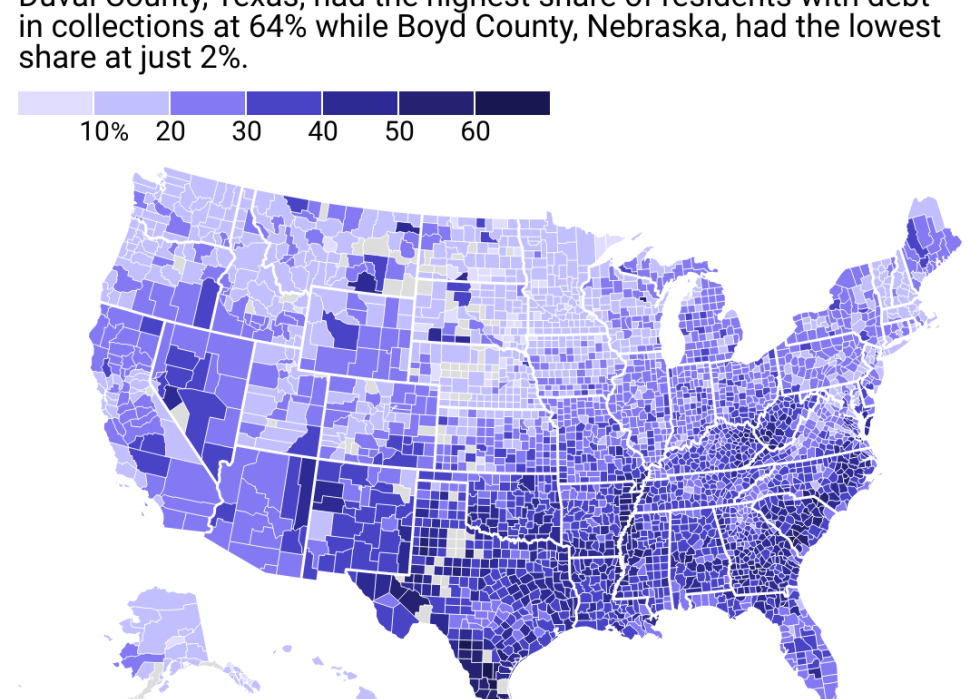
Here's how many people are behind on debt payments in Buckingham County, Virginia
Here's how many people are behind on debt payments in Buckingham County, Virginia
Household debt reached a record $17.29 trillion in the third quarter of 2023, according to the New York Federal Reserve.
Excluding housing debt, the total was $4.8 trillion, up 6.4% from the same period a year earlier. Delinquencies of over 90 days have been rising steadily since 2021, although they are still at low levels by historical standards.
Stacker analyzed data from the think tank Urban Institute to find out where people are most likely to miss their debt payments. This data shows that excluding mortgages, 26% of American adults were significantly late on their debt payments in February 2022. The median debt in collections totaled $1,739, with unpaid medical bills being the most common.
The Urban Institute's numbers also show that nonwhite households tend to have much higher rates of default than white households and that households in less affluent counties tend to have higher debt default rates than wealthier ones.
Based on the think tank's data, Stacker estimates that a household living in a predominantly white county with an income of $150,000 has roughly a 13% chance of being seriously delinquent in its debt payments. In comparison, a household living in a predominantly nonwhite county with an income of $50,000 has a 47% chance of having debt in collections.
Academic research from the National Bureau of Economic Research published in 2019—using more granular data and sophisticated statistical techniques—found other factors, such as a borrower's credit history and total loan balances, matter a great deal, too.

Debt in Buckingham County by the numbers
36.0% of residents have debt in collections.
- Data on median debt are unavailable
- 19.10% of residents have medical debt in collections
- Data on student loans are unavailable
- Data on car/retail loans are unavailable
- Data on credit card debt are unavailable
This story features data reporting and writing by Wade Zhou and is part of a series utilizing data automation across 3,017 counties.



